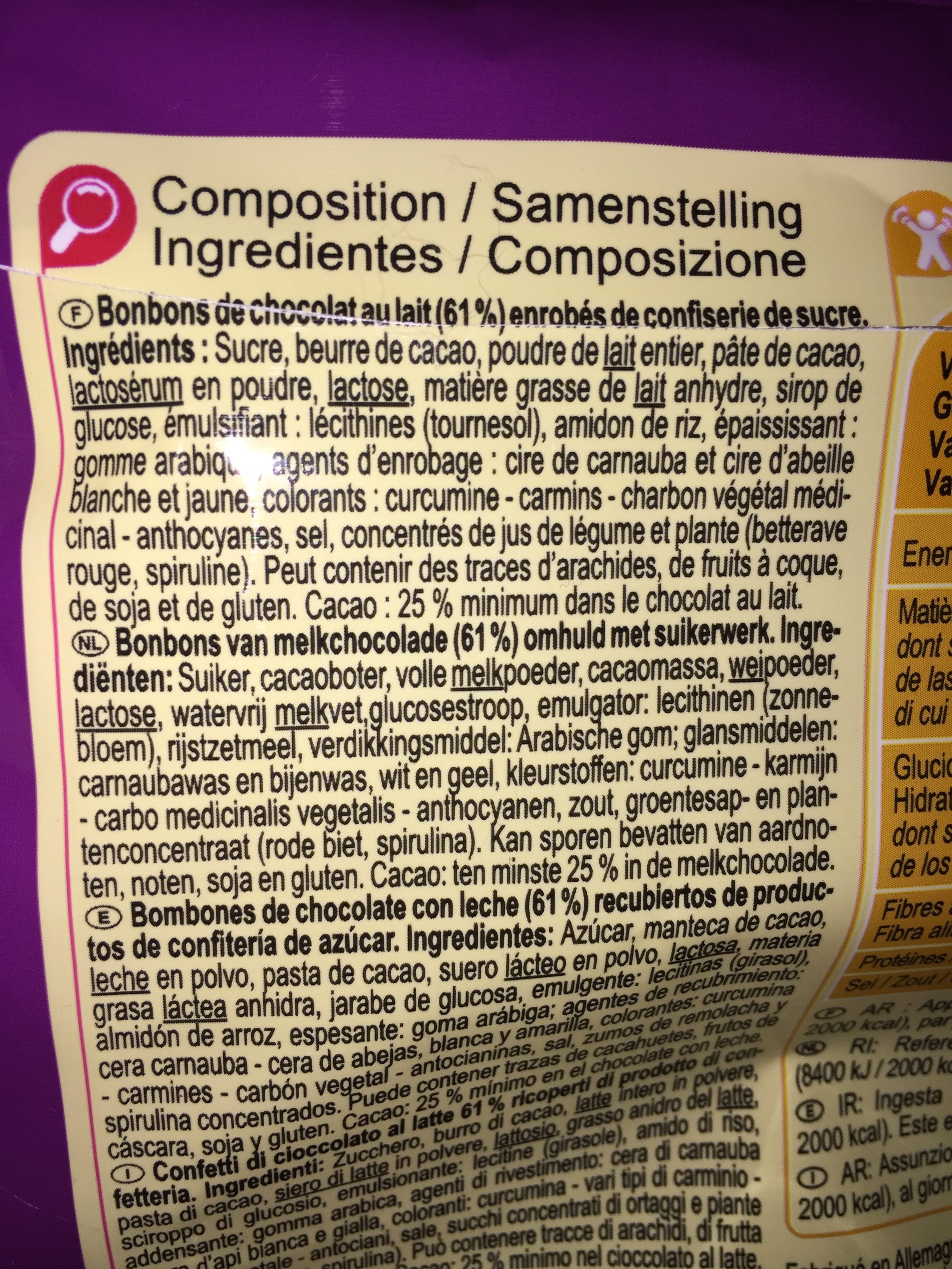Choco' tiz - Carrefour - 250 g
Aquesta pàgina del producte no està completa. Podeu ajudar a completar-la editant-la i afegint-hi més dades a partir de les fotos ja disponibles, o fent-ne més amb l'aplicació de androide o iPhone / iPad. Gràcies!
×
Algunes de les dades d’aquest producte les ha proporcionat directament el fabricant Carrefour.
Codi de barres: 3560070511952 (EAN / EAN-13)
Nom comú: Bonbons de chocolat au lait (61%) enrobés de confiserie de sucre.
Quantitat: 250 g
Marques: Carrefour
Etiquetes, certificacions, premis: Fet a Alemanya, Comptador Nutricional, Grau E NutriScore
Productor: Fabriqué en Allemagne par Piasten GmbH, Piastenstrasse 1, 91301 Forchheim pour La Table Européenne pour Interdis.
Botigues: Carrefour, carrefour.fr
Matching with your preferences
Entorn
Empaquetament
Transport
Altres dades
Altres dades: 250 g e Chocolat au lait
Avís: La consommation de ce produit est déconseillée aux jeunes enfants, ils pourraient l'avaler sans le croquer et risquer de s'étouffer.
Condicions de conservació: À conserver à l'abri de l'humidité, de la chaleur et d'odeurs parasites. Pour une dégustation optimale, à consommer de préférence avant le / N° de lot : voir dans le bas du sachet.
Servei al client: Interdis - TSA 91431 - 91343 MASSY Cedex - France.
Report a problem
Fonts de dades
Producte afegit per kiliweb
Última modificació de la pàgina del producte per foodvisor.
La pàgina del producte, també editada per carrefour, driveoff, openfoodfacts-contributors, org-carrefour, segundo, teolemon, yuka.U1lFcE1JOGpnc2dUdU13ZCtCaU8vUEpSeGJhalpHbVhKc0UzSVE9PQ.






